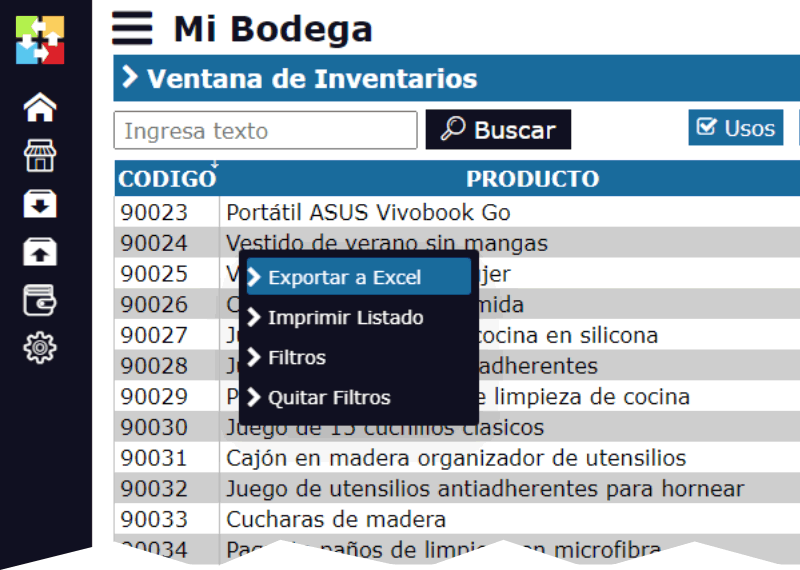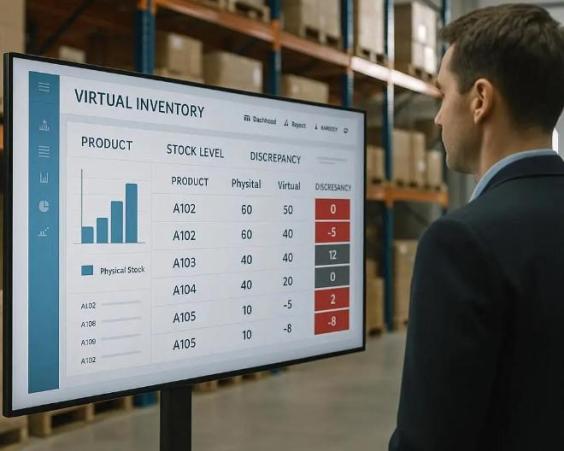Warehouse Organization and Control: A Guide to Efficient Management
Maintaining a well-organized and controlled warehouse is essential to ensure an efficient flow of products, minimize errors, and optimize resources. Here, we explain how to organize a warehouse, maintain proper control, and the key activities carried out in this type of space.

How to Organize a Warehouse?
The order in a warehouse is key to efficiency. To achieve this, it is necessary to implement a system that allows products to be easily located, reduces search times, and optimizes space usage. Here are some steps to properly organize a warehouse:
Product classification: Group products by categories, types, or frequency of use. It is essential that products with higher turnover are more accessible, while those with less demand are located in less busy areas.
Assignment of locations: Each product must have a specific location within the warehouse. Use labels or barcode systems to facilitate quick identification.
Vertical storage: Use shelves and racks to take advantage of height. Make sure aisles are wide enough to facilitate traffic.
Product rotation: Implement methods such as FIFO (First In, First Out) to ensure that older products are used or sold before newer ones.
Cleaning and maintenance: Order also includes keeping the space clean and organized. Implement cleaning routines and ensure that products are correctly labeled and visible.
How to Control a Warehouse?
The control of a warehouse involves detailed tracking of stock, product entries and exits, as well as optimization of internal processes. To maintain efficient control, follow these steps:
Registration of entries and exits: It is crucial to keep an accurate record of all products entering and leaving the warehouse. You can use manual systems or, preferably, inventory management software to automate this process.
Periodic inventories: Perform physical counts periodically to verify that records match actual stock. This helps identify possible discrepancies or losses.
Minimum stock control: Define minimum inventory levels for each product. When stock falls below that level, it is time to make a new order to avoid running out of merchandise.
Management technology: Use inventory software that allows you to have detailed and real-time control of stock. Automated systems such as Kardex or barcode technologies are very useful tools.
What Activities Are Carried Out in a Warehouse?
In a warehouse, several essential activities are carried out for the proper handling and storage of products. Some of the main activities are:
Reception of goods: This is the stage in which products are received from suppliers. This involves verifying the quantity and quality of products and registering them in the inventory system.
Storage: Once received, products are stored in previously designated locations, ensuring that stock order and rotation rules are followed.
Order preparation: Stored products are selected and packed for shipping or distribution.
Dispatch: Prepared products are sent to their respective destinations, whether to customers or other areas of the company.
Stock maintenance: Warehouse personnel are responsible for keeping areas organized, restocking products in their corresponding places, and performing cleaning tasks.
What Are the 4 Types of Inventory?
There are several types of inventory used in different industries that help companies manage their products. The four most common types of inventory are:
Raw material inventory: This is the set of materials used for manufacturing finished products. This type of inventory is common in factories and manufacturing companies.
Work-in-progress inventory: It refers to products that are in some stage of production but are not yet fully completed.
Finished goods inventory: These are products that have already been manufactured or acquired and are ready for sale or distribution.
Supply inventory: It includes materials that are not directly part of the final product but are necessary for operations, such as packaging, labels, cleaning materials, etc.
How to Organize a Warehouse?
To organize a warehouse, it is essential to establish an efficient organization system. Key steps include:
Logical warehouse design: Organize the warehouse so that products with higher turnover are closer to loading or dispatch areas, reducing transportation times.
Implementation of a location system: Assign each product a specific location in the warehouse and use labels or codes to facilitate its location.
Product rotation: Use systems such as FIFO or LIFO (Last In, First Out) depending on the type of products you handle, to ensure they are used or sold in the correct order.
Space optimization: Take advantage of vertical space and organize products based on their size and frequency of use.
Continuous maintenance: Ensure that personnel follow order and cleaning guidelines regularly to keep the warehouse in good condition.
How to Take Inventory in a Warehouse?
Taking inventory in a warehouse is essential to maintain accurate stock control. The process includes the following steps:
Preparation: Before starting, make sure you have all the necessary materials (counting sheets, scanning devices, labels) and organize the work area.
Physical count: Warehouse personnel perform a physical count of the products. The quantity of products in each location should be verified and compared with inventory records.
Review and adjustment: Once the count is done, compare the results with the inventory system. If there are differences, it is necessary to investigate the causes and adjust the records.
Documentation: Record the final inventory and keep all corresponding documentation for future audits or reviews.
Implementation of improvements: Based on inventory results, identify areas for improvement in storage and inventory control processes.





